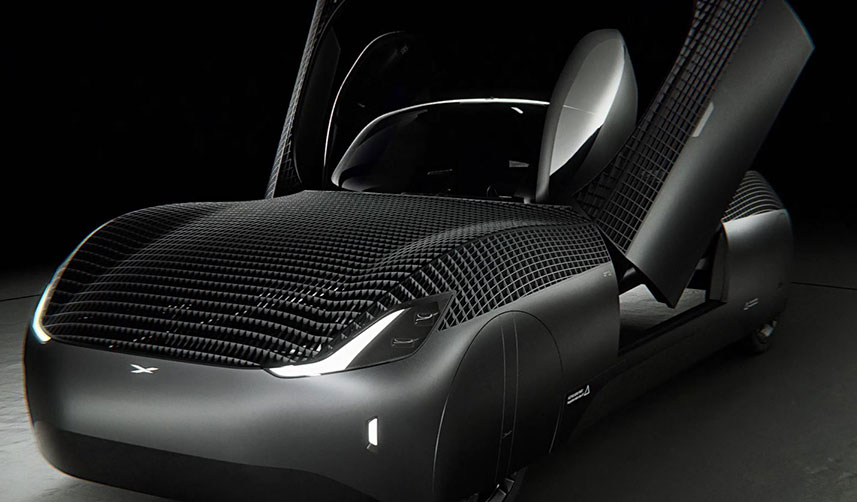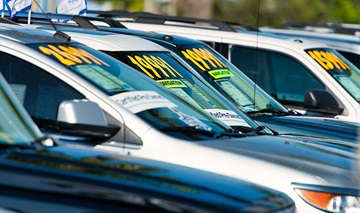What Kind of Car Battery Runs This FAA-approved Flying Car?
Roads? Where you’re going, you don’t need roads.
You will need batteries.
In one company’s vision of an electric flying car, you’ll need lithium-ion batteries.
Most flying car designs that cross the Federal Aviation Administration’s desks range from small planes to foldable helicopters that could bust your garage or fill all the parking spots at a grocery store.
Developed by California startup Alef Aeronautics, the Model A is a two-seater, sedan-looking aircraft that would blend right in with a Honda, Toyota or Kia on roadways — except that it can take off vertically, taking directly from its inspiration, Back to the Future’s heavily modified DMC-12 DeLorean. The FAA issued a special airworthiness certification June 12 to their prototype, allowing them to fly it for exhibitions, demonstrations and development.
The Model A doesn’t run on a fictional Mr. Fusion waste recycler.
This flying car runs on lithium-ion batteries.
The Alef Aeronautics prototype uses standard lithium-ion batteries but “assembled in a proprietary way.” That could mean batteries connected in a series or parallel. Batteries in a series (connecting positives to negatives) can generate more voltage versus a parallel assembly that can run longer at their regular voltage.
Engineers can assemble li-ion batteries in a variety of ways to generate enough power and range for an electric vehicle. For instance, the second-generation Nissan LEAF has almost 200 lithium-ion battery cells. They’re wired into modules that are wired into packs to produce 40 kWh. In the same way, Interstate All Battery Center rebuilds battery packs for power tools by linking batteries in series and parallel, depending on the voltage and amps needed.
The Model A needs the voltage, for sure, to power the eight distributed electric propulsion rotors hidden in the car body. The “hood” vents cover four rotors, and the “trunk” covers four more.
Think of a box fan’s grating covering the fan blades.
The special airworthiness certificate calls the prototype a “rotorcraft.” The FAA said this “is not the first aircraft of its kind” to receive such a certificate.
The flight range is 110 miles, and the land range for the Model A is 200 miles, but at a top land speed of 25 mph. Alef has not released a top flying speed for their prototype. The FAA set a drone speed limit of 100 mph for unmanned aircraft. Racing drones can reach 150 mph.
Electric vehicle owners already understand range anxiety, but a flying car offers other reasons to worry, too. The company’s website lists safety features including a real-time thousand-point diagnostic system, glide landing and a ballistic parachute. These safety systems, and all the other electronics onboard, run on lithium-ion batteries only.
Your car might not fly, but will it start tomorrow?
Ask for a battery test at 150 000 locations, including our Interstate All Battery Center locations. Find one near you.
There are a few reasons why lithium-ion might be the battery to take drivers to the skies.
What Makes Lithium-ion Batteries the Best Choice for Alef’s Flying Car
Interstate Batteries auto electronics expert Jeff Barron laid out three big reasons why a lithium-ion battery might be the best choice.
First, it’s all about energy density. As in, how much electricity can you store in a battery that weighs as little as possible? The Model A, certified as the Armada Model Zero with the FAA, was designed to be as lightweight as possible. The body, made of carbon fiber and Kevlar, is an open fan vent over the rotors. Lithium-ion batteries are one of the lightest batteries per amp. Lithium polymer and LiFePO4 batteries are heavier.
Lithium-ion batteries do wear out. Let’s refresh yours.
Whether it’s in your favorite power tool, Nintendo Switch or laptop, we can replace lithium-ion batteries. Visit your nearest Interstate All Battery Center location for new life in your favorite gadgets.
Lithium-ion batteries have been on the market since the 1990s. Barron said newer technologies, such as lithium iron and lithium polymer batteries, may be a significant investment compared to what’s already in most phones, laptops and Bluetooth earpieces.
Barron said that a lithium-ion battery will typically last longer than a lithium polymer battery. The gel inside a lithium polymer battery hardens over time. Lithium-ion batteries have thin layers of liquid instead. They can run low and recharge over and over, like your phone battery. Now, you can damage a lithium-ion battery by running it all the way down or by keeping it at 100% all the time. To make a lithium-ion battery last even longer, keep it between 40% and 90% charge.

What’s Next for the Model A Flying Car?
The new certification allows them to fly their prototype for tests and exhibitions.
The company plans to bring the car to market in 2025, with a first model selling for $300 000 and plans for a second model in 2035 priced at $35 000. They do have to also get approval from the National Highway Traffic Safety Administration to make their flying car street legal.
“We’re excited to receive this certification from the FAA. It allows us to move closer to bringing people an environmentally friendly and faster commute, saving individuals and companies hours each week,” Alef CEO Jim Dukhovny said. “This is one small step for planes, one giant step for cars.”
With batteries powering every step of the way, the sky is the limit.
Worried about the battery in your car? Get a battery test.
Visit an Interstate All Battery Center or your local repair shop for a free, thorough analysis of your charging and starting system.
Images provided by Alef Aeronautics




